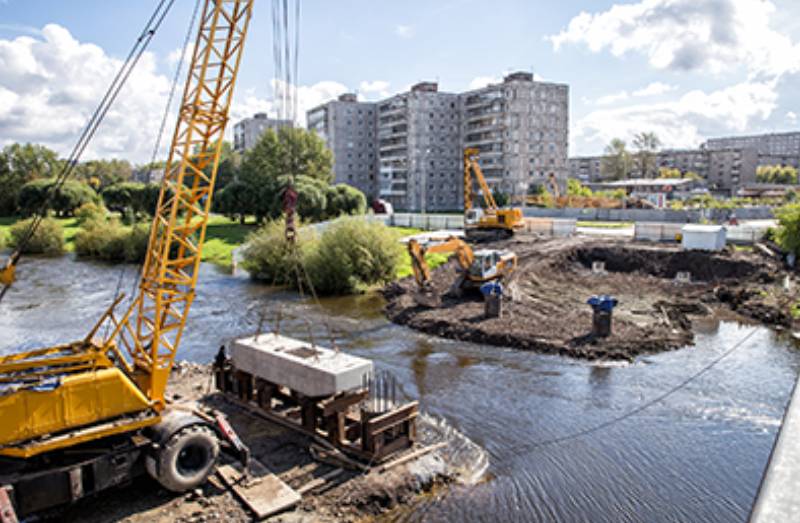Environmental remediation services help remove pollutants from soil, water, and air to restore safety and comply with regulations. Choosing the right provider ensures effective contamination management, regulatory compliance, and long-term environmental protection. This guide covers key factors to consider, such as comprehensive service offerings, industry expertise, customized solutions, emergency response capabilities, and a commitment to safety and sustainability. By evaluating providers carefully, you can ensure a successful remediation project that protects both public health and the environment. Making an informed decision leads to efficient solutions that mitigate risks and prevent future contamination.
Understanding Environmental Remediation Services
Environmental remediation services, involves the removal of pollutants or contaminants from environmental media such as soil, groundwater, sediment, or surface water. The goal is to protect human health and restore the environment to a safe and sustainable condition. Services may include:
- Site Assessment and Investigation: Identifying the extent and type of contamination.
- Remediation Planning and Design: Developing strategies to address contamination.
- Implementation of Remediation Techniques: Applying methods like excavation, bioremediation, or chemical treatment.
- Monitoring and Maintenance: Ensuring the long-term effectiveness of remediation efforts.
By understanding these components, businesses and property owners can better evaluate remediation providers to ensure they select a company that aligns with their needs and regulatory requirements.
Key Factors to Consider When Choosing a Provider
1. Comprehensive Service Offerings
Choose a provider that offers a full range of services, from initial assessment to final remediation and monitoring. This ensures a streamlined process and consistent quality throughout the project. Comprehensive services may include:
- Contamination Assessment: Evaluating the presence and extent of pollutants.
- Cleanup Project Management: Overseeing the remediation process to ensure efficiency and compliance.
- Waste Disposal: Handling and disposing of hazardous and non-hazardous waste safely.
- Perimeter Air Monitoring Solutions: Implementing systems to monitor air quality during remediation activities.
- Safety Training Programs: Providing education to ensure safe practices during and after remediation.
Working with a full-service remediation company reduces the hassle of coordinating multiple contractors and helps maintain quality control throughout the project.
2. Experience and Expertise
Evaluate the provider’s experience in handling projects similar to yours. An experienced team is more likely to anticipate challenges and implement effective solutions. Look for:
- Industry Knowledge: Familiarity with the specific contaminants and remediation techniques relevant to your project.
- Qualified Personnel: A team of trained professionals with certifications in environmental science, engineering, and related fields.
- Proven Track Record: Case studies or references demonstrating successful past projects.
Additionally, a well-established company will have the necessary infrastructure, equipment, and resources to handle complex remediation tasks efficiently.
3. Regulatory Compliance
Ensure the provider has a thorough understanding of local, state, and federal environmental regulations. Compliance is critical to avoid legal liabilities and ensure the safety of all stakeholders. Key aspects include:
- Knowledge of Regulations: Staying updated with laws governing environmental remediation.
- Permitting Assistance: Helping obtain necessary permits for remediation activities.
- Documentation and Reporting: Maintaining accurate records to demonstrate compliance.
Failure to comply with environmental regulations can lead to hefty fines and project delays. A competent remediation provider will ensure all legal requirements are met and properly documented.
4. Customized Solutions
Every contamination scenario is unique. The provider should offer tailored solutions that address the specific needs and conditions of your site. This involves:
- Site-Specific Plans: Developing remediation strategies based on the site’s characteristics and contamination level.
- Flexible Approaches: Adapting methods as needed to achieve optimal results.
- Client Collaboration: Engaging with you to understand your goals and constraints.
A one-size-fits-all approach rarely works in environmental remediation. The best providers take a customized approach, ensuring their strategies are effective for the specific contaminants and environmental conditions present at your site.
5. Emergency Response Capabilities
Contamination issues can arise unexpectedly. A provider with emergency response services can address urgent situations promptly, minimizing potential harm and costs. Consider:
- 24/7 Availability: Access to assistance at any time.
- Rapid Mobilization: Ability to deploy teams quickly to the affected site.
- Crisis Management Expertise: Experience in handling high-pressure situations effectively.
Prompt action can prevent contamination from spreading, reducing both environmental and financial impacts.
6. Commitment to Safety
Safety is paramount in remediation projects. The provider should prioritize the health and safety of workers, clients, and the public. This includes:
- Comprehensive Safety Programs: Implementing protocols to prevent accidents and exposure.
- Regular Training: Ensuring staff are educated on the latest safety practices and equipment.
- Safety Certifications: Holding certifications that demonstrate a commitment to safety standards.
A strong safety culture not only protects workers but also reduces the likelihood of costly project disruptions due to accidents or regulatory violations.
7. Environmental Stewardship
Choose a provider that emphasizes sustainable practices and aims to minimize environmental impact. This reflects a commitment to not only addressing current issues but also preventing future contamination. Look for:
- Use of Green Technologies: Employing methods that are environmentally friendly.
- Waste Reduction Strategies: Focusing on minimizing waste generation and promoting recycling.
- Habitat Restoration Efforts: Working to restore ecosystems affected by contamination.
Companies that prioritize sustainability help protect natural resources and contribute to a healthier planet while complying with environmental regulations.
Evaluating Potential Providers
When assessing potential environmental remediation service providers, consider the following steps:
- Conduct Thorough Research: Gather information on various providers, their services, and reputations.
- Request Detailed Proposals: Ask for comprehensive proposals outlining their approach, timeline, and cost estimates.
- Check References: Speak with past clients to gauge satisfaction and performance.
- Assess Communication: Ensure the provider communicates clearly and is responsive to your inquiries.
- Review Certifications and Licenses: Verify that the provider holds necessary certifications and licenses to operate in your area.
- Compare Costs and Timelines: Ensure that the cost is competitive and the projected timeline aligns with your requirements.
Taking the time to evaluate different providers thoroughly ensures you select a remediation partner that meets your needs and expectations.
Conclusion
Selecting the right environmental remediation services provider is a critical decision that impacts the success of your project and compliance with environmental regulations. By considering factors such as comprehensive services, experience, regulatory knowledge, customized solutions, emergency response capabilities, safety commitment, and environmental stewardship, you can make an informed choice that ensures effective and responsible remediation of environmental hazards. A well-qualified remediation provider will not only help you meet regulatory standards but also ensure that contamination is handled efficiently, safeguarding both public health and the environment.








